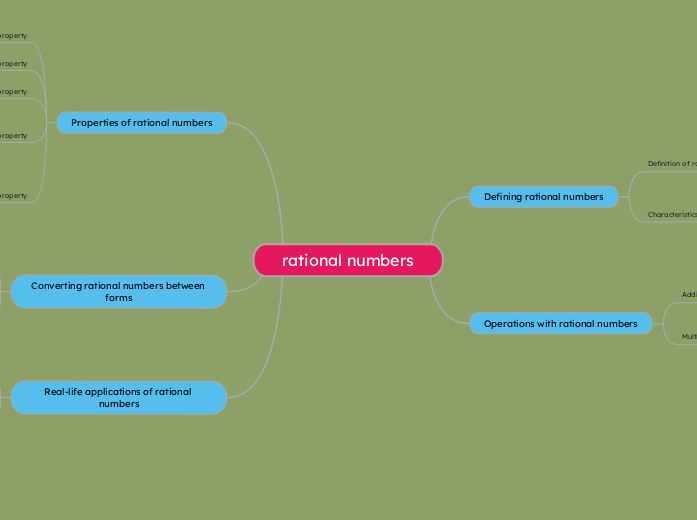rational numbers
Defining rational numbers
Definition of rational numbers
Characteristics of rational numbers
Can be expressed as a fraction
Can be expressed as a terminating or repeating decimal
Can be positive
negative
or zero
Operations with rational numbers
Addition and subtraction of rational numbers
Adding and subtracting fractions
Adding and subtracting decimals
Multiplication and division of rational numbers
Multiplying and dividing fractions
Multiplying and dividing decimals
Properties of rational numbers
Closure property
Adding or multiplying two rational numbers results in a rational number
Associative property
Changing the grouping of rational numbers does not affect the result of addition or multiplication
Commutative property
Changing the order of rational numbers does not affect the result of addition or multiplication
Identity property
The sum of any rational number and 0 is the original number
The product of any rational number and 1 is the original number
Inverse property
The sum of any rational number and its additive inverse is 0
The product of any rational number and its multiplicative inverse is 1
Converting rational numbers between forms
Converting fractions to decimals
Dividing the numerator by the denominator
Converting decimals to fractions
Writing the decimal as a fraction with a power of 10 as the denominator
Converting fractions to mixed numbers
Dividing the numerator by the denominator and writing the quotient as the whole number part and the remainder as the fractional part
Converting mixed numbers to fractions
Multiplying the whole number part by the denominator and adding the numerator
Real-life applications of rational numbers
Measurement
Converting between units using rational numbers
Finance
Calculating interest rates and percentages using rational numbers
Probability
Expressing probabilities as rational numbers
Scaling
Using rational numbers to scale models or maps
